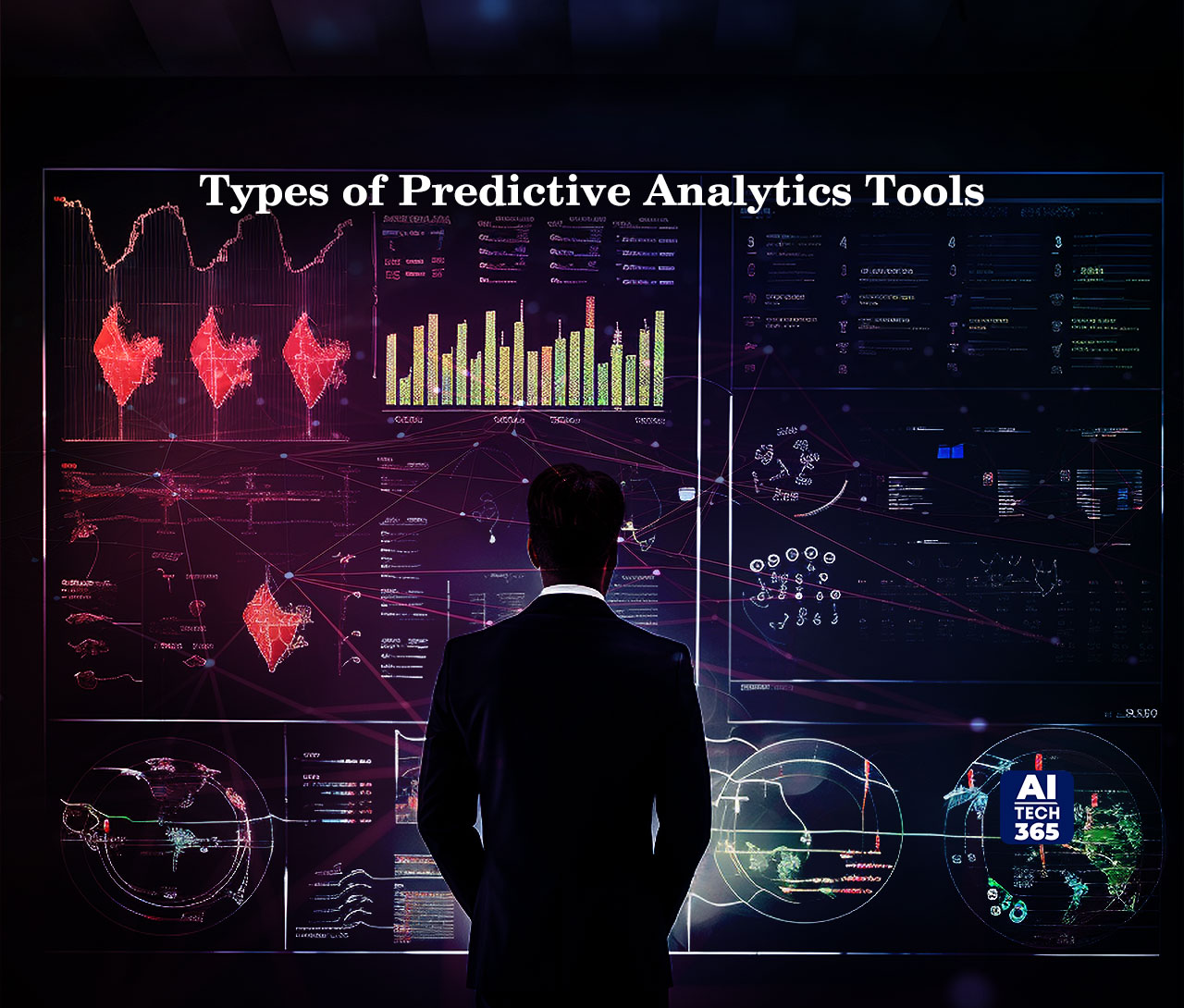Organizations are overwhelmed with an enormous amount of data that contains important information in the big data era. It can be difficult to translate this data into insights that can be utilized, though. Predictive analytics techniques are a useful tool in this situation. Predictive analytics tools use sophisticated algorithms and statistical models to examine both past and current data to find patterns, trends, and correlations. With the help of these technologies, businesses can anticipate events accurately, spot possible hazards, streamline workflows, and make data-driven decisions that will improve results.
What are Predictive Analytics Tools?
Predictive analytics tools are software programs that evaluate past and current data, find patterns, trends, and correlations, and forecast future events using sophisticated algorithms and statistical models. Over time, these tools have changed, becoming more focused on the needs of the user, incorporating automated functions, and meeting a range of analytical requirements from prescriptive to descriptive. Businesses may make data-driven choices, streamline operations, identify fraud, improve marketing efforts, and obtain a competitive edge in the market with the help of predictive analytics technologies.
Types of Predictive Analytics Tools
Here are some types of predictive analytics tools available:
Microsoft Azure Machine Learning: This tool by Microsoft Azure allows users to develop, deploy, and manage machine learning models in the cloud.
RapidMiner: RapidMiner is a widely used predictive analytics tool offering a variety of features for data analysis, including data preparation, modeling, evaluation, and deployment.
IBM SPSS: IBM SPSS is a renowned predictive analytics tool offering advanced statistical analysis, data mining, and predictive modeling capabilities.
H2O.ai: H2O.ai is an open-source predictive analytics tool providing automatic scoring pipelines, feature engineering, and flexible data and deployment options.
Alteryx: Alteryx stands out for its collaborative features, allowing teams to collaborate on data analysis projects effectively.
TIBCO: TIBCO offers predictive analytics tools with premium plans that provide insights into forecasting and additional analytical capabilities.
Emcien: Emcien focuses on marketing analytics, helping businesses analyze customer data to make informed marketing decisions.
Sisense: Sisense, primarily a business intelligence software, also offers predictive analytics features tailored to data scientists, providing valuable insights for decision-making.
Use Cases of Enabling Predictive Analytics Tools
Here are some real-world scenarios where predictive analytics proves invaluable:
Churn Prevention: Predictive analytics aids businesses in spotting customers likely to churn, allowing proactive retention strategies to be implemented.
Demand Forecasting: By analyzing past data, predictive analytics forecasts future demand, optimizing inventory and production planning.
Fraud Detection: Predictive analytics detects patterns hinting at fraudulent activities, enabling organizations to thwart such attempts.
Customer Segmentation and Personalization: Analyzing customer data helps segment them based on preferences, facilitating personalized marketing efforts and enhancing satisfaction.
Healthcare Outcome Prediction: In healthcare, predictive analytics uses patient data to predict outcomes like readmission risks, enhancing decision-making and patient care.
Optimizing Marketing Campaigns: Predictive analytics uncovers customer responses and purchasing patterns, fine-tuning marketing efforts and capitalizing on cross-selling opportunities.
Financial Risk Assessment: From assessing creditworthiness to predicting default risks, predictive analytics aids financial institutions in managing risks effectively.
Supply Chain Optimization: Predictive analytics forecasts demand, streamlines inventory, and enhances supply chain efficiency, driving cost reduction and operational improvement.
These examples showcase the versatility of predictive analytics, catering to diverse industries and addressing specific business needs and objectives.
Applications of Using Predictive Analytics Tools
Let’s explore some key applications of predictive analytics tools:
Streamlining Operations: These tools analyze data, pinpointing areas to enhance resource use, inventory control, and efficiency. They optimize business operations.
Customer Profiling and Personalization: By examining customer data, predictive analytics segments audiences based on preferences, behaviors, and traits. This allows personalizing marketing, boosting satisfaction, and nurturing loyalty.
Risk Identification and Prevention: Detecting patterns and anomalies in data, these tools help organizations identify and mitigate potential risks like fraud, cyber threats, and other issues.
Forecasting Demand: Historical data analysis enables predicting future demand for offerings. This aids in inventory management, production planning, and optimizing supply chains.
Healthcare Outcome Prediction: Patient data analysis predicts outcomes like readmission rates, disease progression, and treatment effectiveness. It guides healthcare providers’ decisions, improving patient care.
Marketing Optimization: Analyzing customer data predicts responses, preferences, and buying patterns. This information optimizes marketing campaigns, targets segments, and boosts marketing ROI.
Evaluating financial risks: Predicting risks is key to smart decisions for lenders, insurers and banks. Analytics tools can estimate credit scores, probability of defaults, and validity of claims. Equipped with reliable data, financial firms manage risks adeptly.
Safeguarding cyber realms: Monitoring networks and user actions helps detect cyber threats early. Analytics tools methodically scrutinize traffic patterns and behavior. Unusual activities trigger alerts, allowing prompt responses to thwart potential breaches.
How Does Predictive Analytics Work?
Predictive Analytics operates by following a series of steps to forecast likely outcomes based on available data. It incorporates knowledge data discovery and utilizes data mining and machine learning techniques to generate both qualitative and quantitative predictions for the future.
Here’s how it works:
Access and Exploration of Data: The first step in the process is gathering pertinent data from multiple sources, including databases, data lakes, and sensors. After that, this data is analyzed to find trends and patterns.
Pre-processing and Data Aggregation: In this stage, any errors or inconsistencies are removed from the data by cleaning and transforming it. After a few features are retrieved, the data is combined into an analysis-ready format.
Predictive Models Development: Statistical and Computational methods are employed to develop predictive models. These models are trained using historical data and experiments are conducted to fine-tune parameters and optimize performance.
Integration with Real-Time Systems: Prescriptive analytics is frequently used in conjunction with predictive models when integrating them into real-time systems. Due to this integration, intelligent systems that can forecast future events and suggest actions to take to get desired outcomes can be created.
What are the Benefits of Predictive Analytics tools?
Accurate and Reliable Insights: These tools dig into past and present data, providing solid insights. This helps organizations make smart decisions and spot opportunities effectively.
Risk Detection and Prevention: Predictive analytics tools are great at spotting patterns and anomalies in data, helping organizations catch and stop fraudulent activities, cyber threats, and other risks.
Better Decision-Making: These technologies support companies in making data-driven decisions by analyzing data and generating predictions. This enhances procedures and guarantees improved outcomes throughout the company.
Cost and Time Savings: Predictive analytics technologies reduce waste, improve resource allocation, and streamline processes. Money is saved, and productivity is increased.
Improved Customer Experience: By using customer data, these technologies identify possibilities for cross-selling, increase satisfaction with clients, and tailor marketing campaigns.
Improved Inventory Management: Forecasting inventory requirements, streamlining supply chain processes, and increasing sales are all advantageous to retailers.
Improved Forecasting: Demand, sales, and market trends may all be anticipated with the use of predictive analytics technologies. This aids in the efficient planning of organizations.
Streamlined Business Operations: These tools make various business functions smoother, from managing supply chains to healthcare operations and financial risk assessment.
Winding Up
In today’s data-driven environment, predictive analytics tools are essential. These effective technologies provide precise insights, enhanced decision-making, risk identification, and financial savings. Organizations may estimate future outcomes, streamline processes, and improve the entire customer experience by utilizing both historical and real-time data. Predictive analytics technologies are widely applicable across several industries, ranging from optimizing corporate processes to creating customized marketing strategies.





